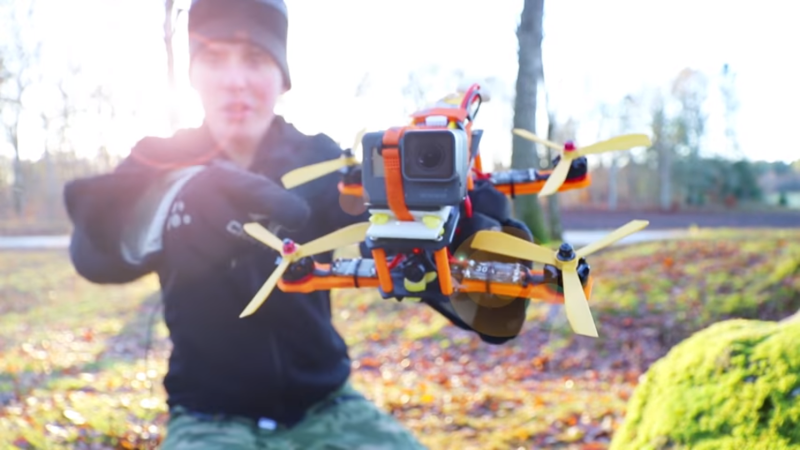In the world of drones, propeller choice is key to performance. Selecting the right props can have a major effect on things like flight time, vibration, and a whole host of other factors. Thinking it might be fun to experiment, [RCLifeOn] decided to 3D print some props and head out for a flight.
The props are a fairly simple 3-bladed design, which were printed in both PETG and PLA. No major difference is noted between the two materials, and the quadcopter under test is able to fly with either. It was noted that the props perform particularly poorly in a crash, with all props failing even in the softest of crashes. We would recommend some eye (and body) protection when spinning these props up for the first time.
If you’re keen to try them out yourself, the STL file can be had here. The video notes that when printing 4 props, 2 must be reversed in the Y-axis to print a counter-rotating set of 4. The instructions used for creating propellers in Fusion3D are available here.
It’s a worthy experiment, and something we’d like to see more of. With a 3D printer, it’s possible to experiment with all manner of propeller designs, and we’d love to see the best and worst designs that are still capable of flight. We’ve also seen 3D printed props before, like this effort from [Anton].

















he needs to learn the old art of prop balancing. “what is old is new again”
I guess you didn’t watch the whole video. He addresses this at the end. He decided against it because he wanted to know if and how they would fly and it would cost a lot of time to balance all the printed propellers, as he printed a couple of sets of different materials.
yeah, video’s with long ramblings of people that clearly like to hear themselves talk tend to wear on me.
Half expected a subtitle of, but the drone stays on the ground.
I was out at “all props failing”. There are a couple of things I’m still not printing. My expensive drone’s propellers are one. Maybe as an emergency? Real propellers are cheap and fantastic. I don’t need any help crashing my drone.
fantastic openscad version here. Spline between naca4 profiles.
– https://www.thingiverse.com/thing:1208001
Also many more on thingiverse. some openscad and parameterised
– https://www.thingiverse.com/thing:2027238
– https://www.thingiverse.com/thing:172801
Export them all 10x bigger than lifesize then scale down in your slicer.
Or you could changes the $fs, $fa, and $fn variables instead of unnecessary scaling functions.
One of those times when you CAN do something, but I wonder if you really SHOULD.
The very real danger of one of these props coming apart at high RPM seems to greatly outweigh any theoretical gains you might get from being able to make props at custom pitches. Even if you aren’t worried about bodily injury, you should be concerned about losing your quad if one of your props suddenly ceases to exist at speed/altitude.
Perhaps a low temp bake would help…..
ive printed ducted fans and havent had a rotor failure yet. of course thats significantly more robust than a spindly propeller blade.